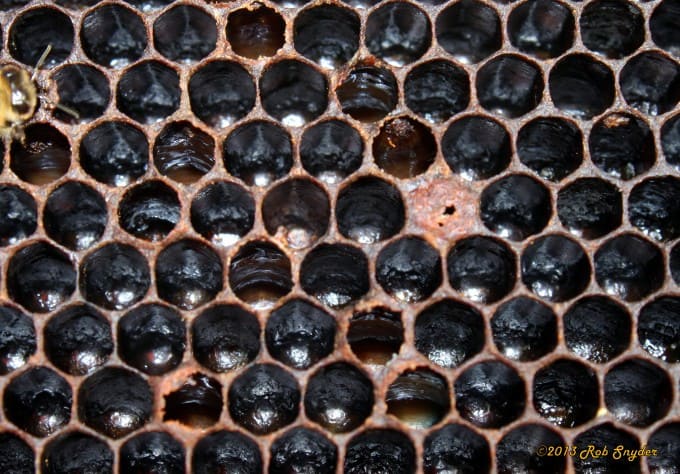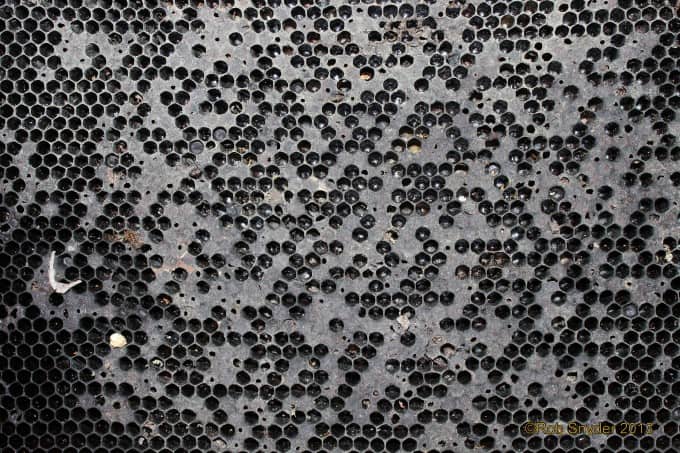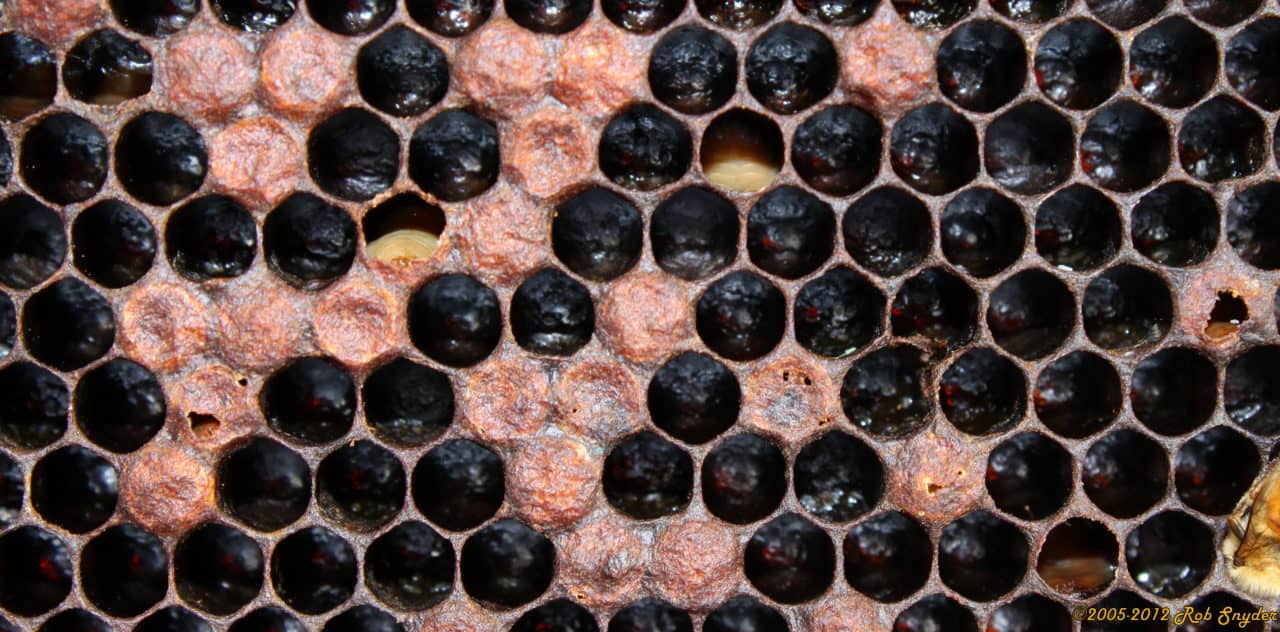
How does AFB spread? American Foulbrood (Paenibacillus larvae) is introduced to the hive by drifting bees from nearby colonies, infected equipment/tools, beekeepers and robbing. The infection begins when spores enter the hive, and then food contaminated by spores is fed to the larvae by nurse bees. Once spores are in the midgut the bacteria take over using the larvae as a source of nourishment. After the cells are sealed, death occurs. If death occurs while in the pupal stage, there may be a protruding tongue present. When there is a serious infection you can notice moisture on sealed brood as they start to sink. Sunken sealed cells are a result of decomposing larvae. AFB is very contagious and all equipment must be cleaned before using it in healthy hives.
The AFB scale is very hard for the bees to remove and can infect colonies for years to come. This is why some states have a “burn only” policy, but others allow the use of antibiotics to control the disease. It is important to have the AFB tested by a lab (USDA Honey Bee Lab) to identify if the AFB strain is resistant to Terramycin (oxytetracycline hydrochloride).
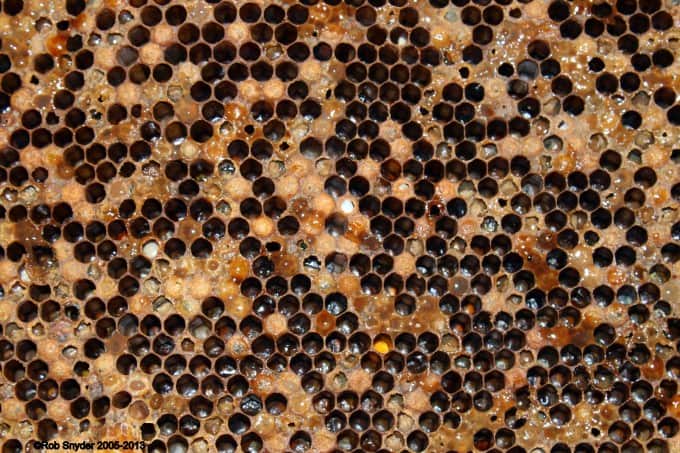
Symptoms:
• Spotty brood pattern, perforated sealed brood with coffee brown larvae inside, sunken sealed brood, coffee brown larvae sunken to the bottom of the cell.
• Moisture on sunken sealed brood, protruding pupal tongue (rare), and rotting smell (compared to rotting meat or sulfurous chicken house).
• Light to dark brown to black scale that is hard to remove.
• Often colonies next to infected colonies will show symptoms of the disease.
• Larvae rope at least 2 cm.
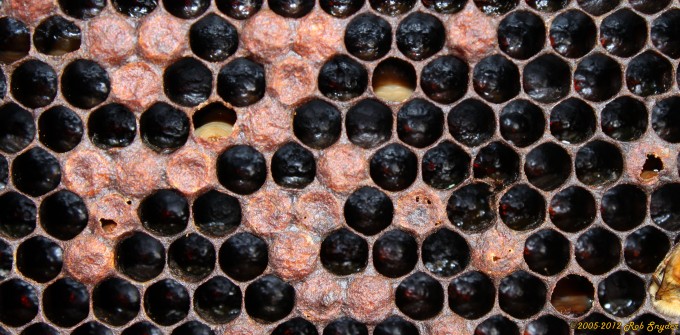
Treatment:
It is best to burn all colonies infected with AFB but you can treat infected colonies with antibiotics. There are two antibiotic treatments for AFB: Terramycin and Tylan. If AFB is not resistant to Terramycin (oxytetracycline hydrochloride) then this antibiotic is used. If the strain of AFB is resistant to Terramycin, than Tylosine is the antibiotic used to treat the colony. Treating colonies 8 weeks prior to the nectar flow is recommended to prevent honey from being contaminated.
Note: Tylan is supposed to be used once symptoms occur in the hive because it leaves behind residuals for far longer than Terramycin. Terramycin is the only antibiotic that can be legally used prophylactically.

